How To Draw Arms Step By Step
Introduction
Hi all! My name is Dani Puente, and today I will give you some guidelines to learn and improve drawing human arms easily and quickly.
It is essential that, as illustrators or people who love illustration, we know some anatomy since this is one of the key pieces to grow as artists and to improve the quality of our illustrations. An incorrect, disproportionate posture or errors in the extremities can ruin our final work. However, and since anatomy is not simple, in this tutorial, I will give you the keys to draw arms in a real, anatomical, and credible way.
I hope that my advice will help you learn a little more about the human body and motivate you to continue learning.
Are you ready?
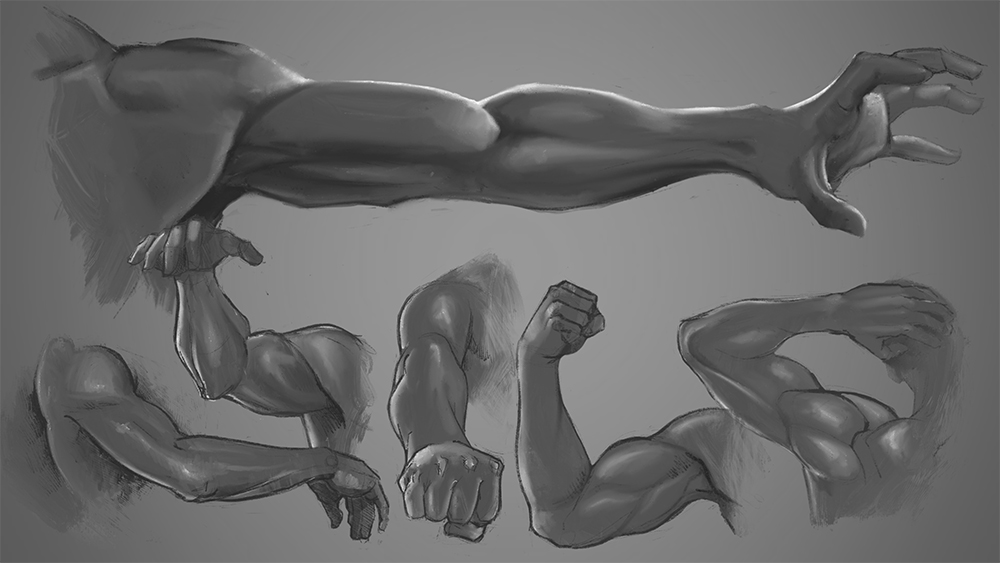
Proportions
To start drawing the limbs of a human body, proportions are the first thing that we must know well. In this case, I will focus on those of the arm.
As you can see in the following image, the arm can be divided into three parts. I will take the dimensions of the rest of the body as a reference.
The first part goes from the shoulder to the elbow (A). This part begins at the collarbone and ends at the level of the last rib. The second part is the forearm, which extends from the elbow to the wrist (B) specifically, at the height of the femur's head. And the third is the hand (C), which goes from the wrist to the fingertips and ends approximately at the center of the thigh. I will show you all of this in more detail throughout this tutorial.
Study the following drawing carefully:
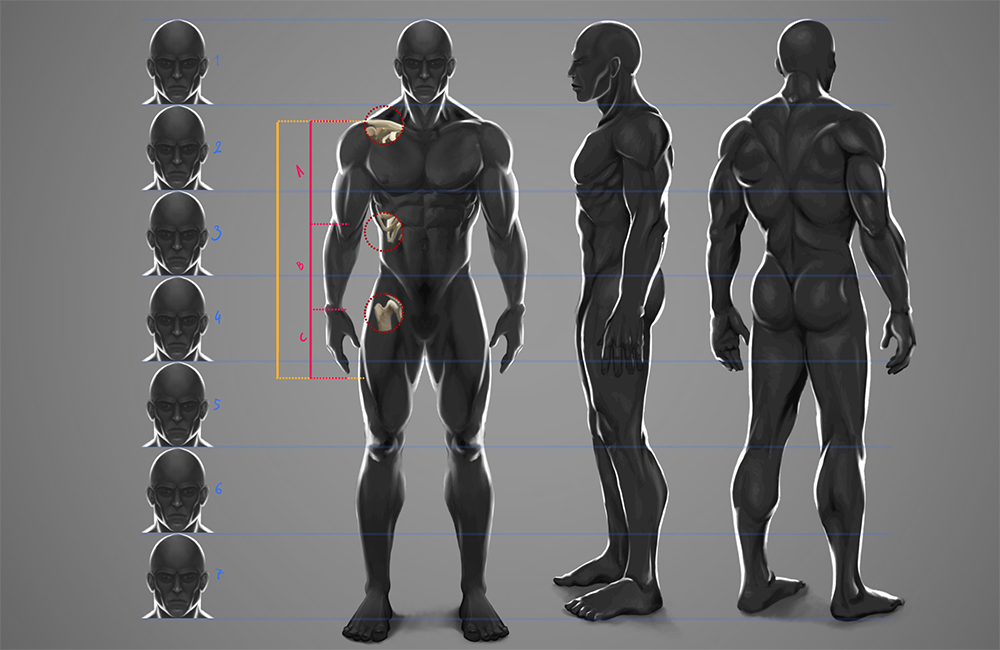
Another important point is never to forget that the length of the arms outstretched is equal to the individual's height from the shoulders down.
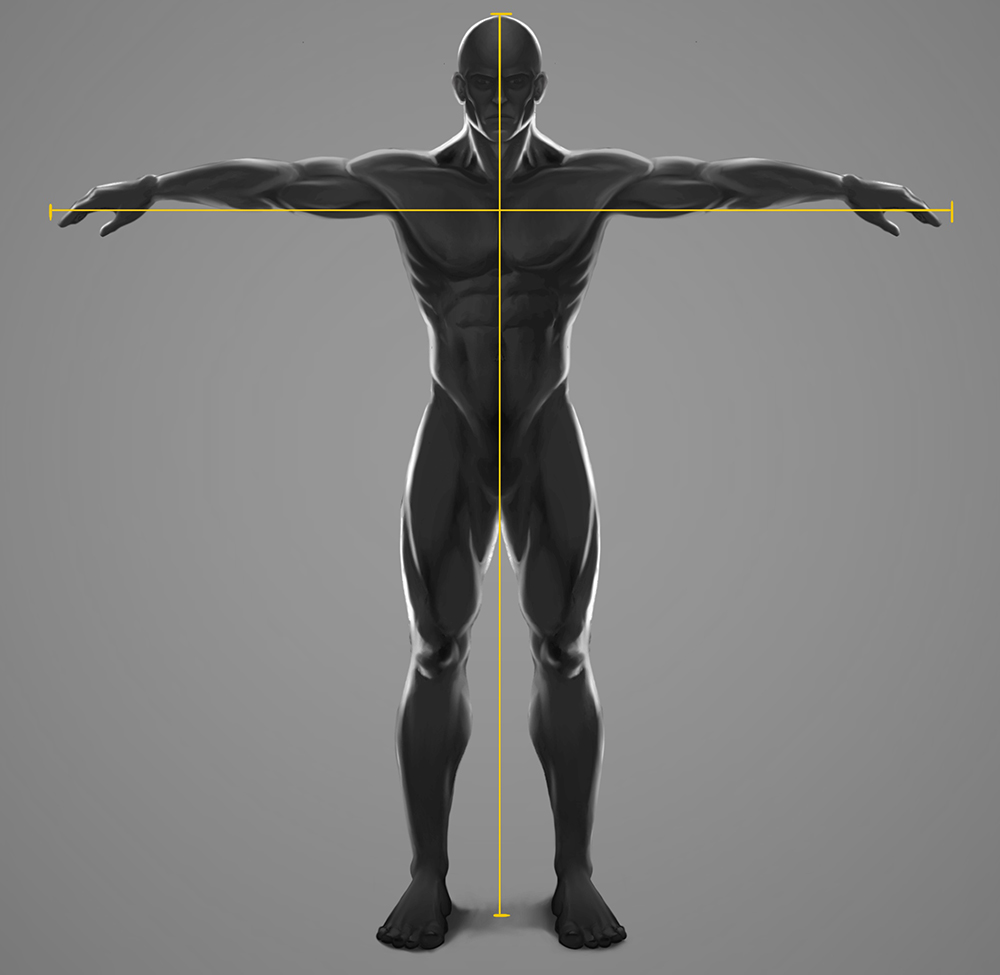
Now let us focus on the proportions of the arm. As I said, the arm is divided into three parts: the arm, the forearm, and the hand. However, I am going to focus on the arm and the forearm.
The top part of the arm, which is the longest (A), is the humerus, a strong and long bone that starts at the shoulder and connects to the elbow, connecting at the joint in the forearm (B).
The bones that make up the forearm (B) are the ulna and the radius (red). These bones connect at a joint and are responsible for turning the wrist.
If you divide the length into 12 portions, you can see that A is the longest part, with five units, the forearm (B) has four units, and the hand (C) has three units.
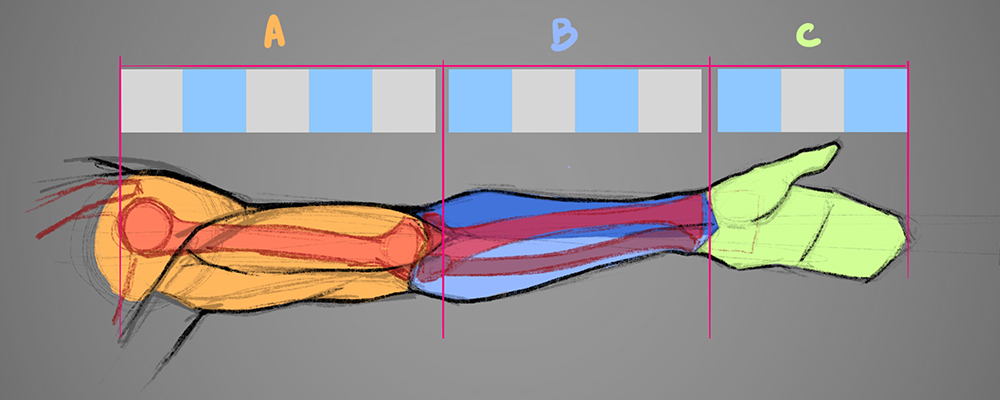
Construction
Once you understand the proportions of your arm, you can then familiarize yourself with its shape and understand its musculature. The insertion of the muscles is like a chain.
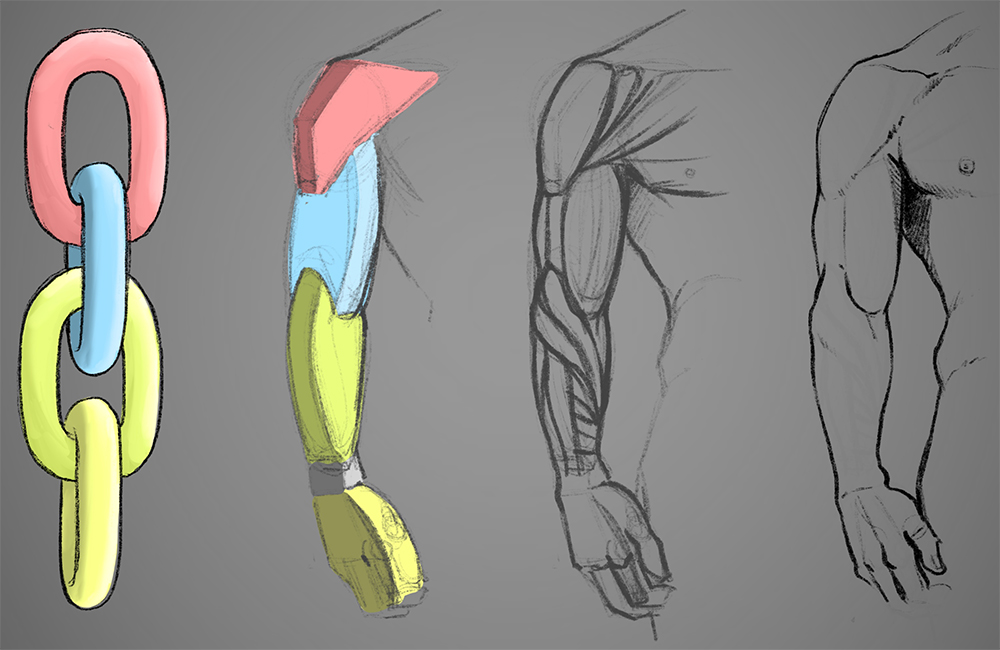
A useful guide for constructing an arm is to include the line formed by the subcutaneous points or bones that can be perceived through the skin, such as the collarbone, elbow, and head of the ulna at the wrist.
Take a look at the following image:
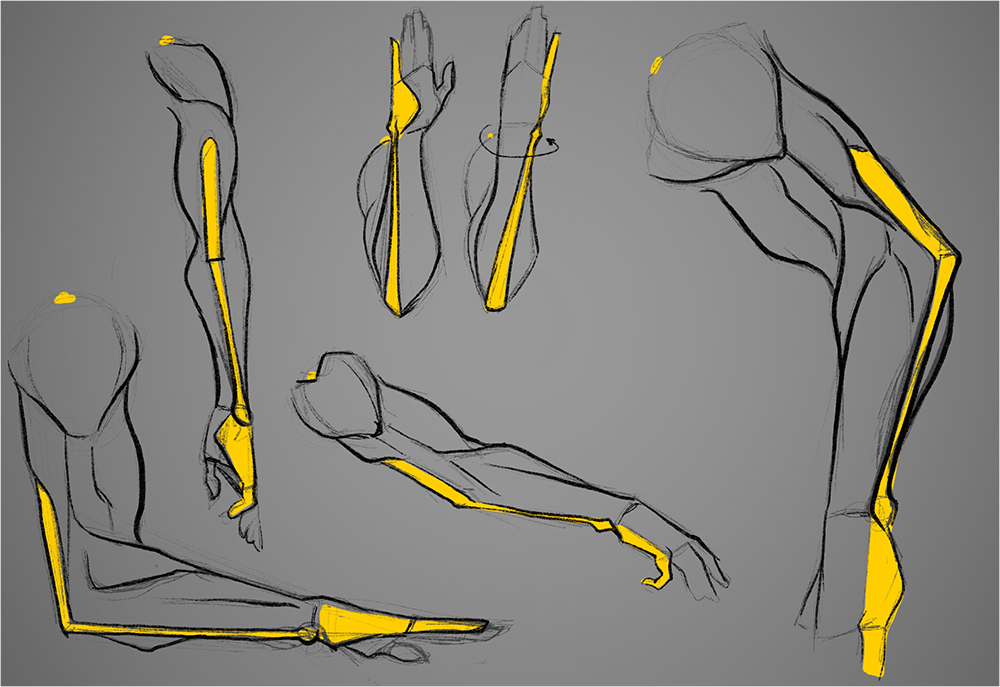
Muscle Anatomy
To learn and be able to realistically draw the arms of your character, it is better to know how to locate the most important muscles of the limb you are studying. Whatever your style, knowing them will be useful in achieving the right shape, which will enrich your illustrations.
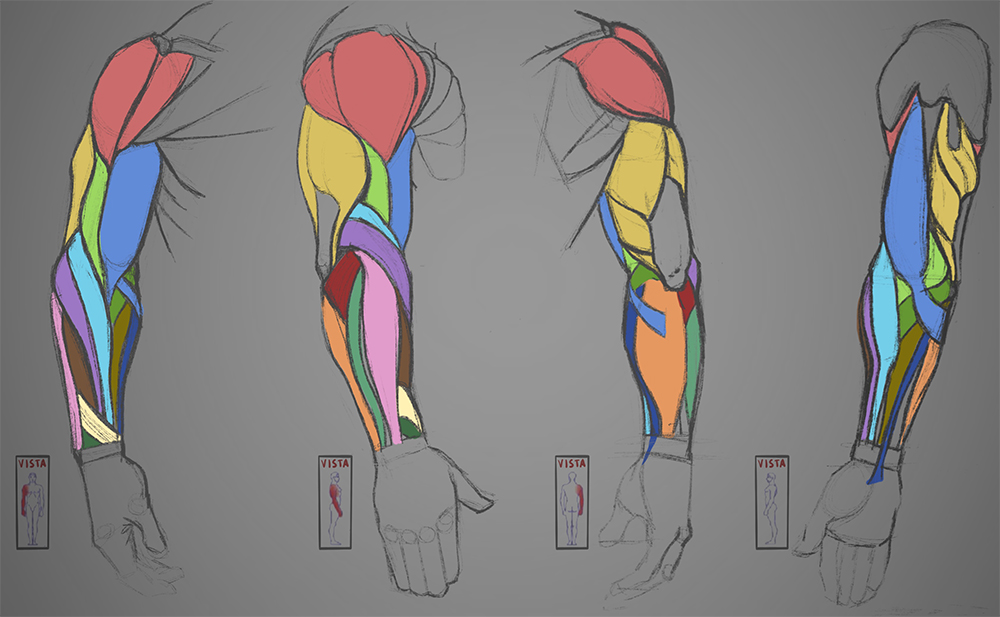
Here you can see in more detail the aforementioned subcutaneous points in areas A, B, and C.
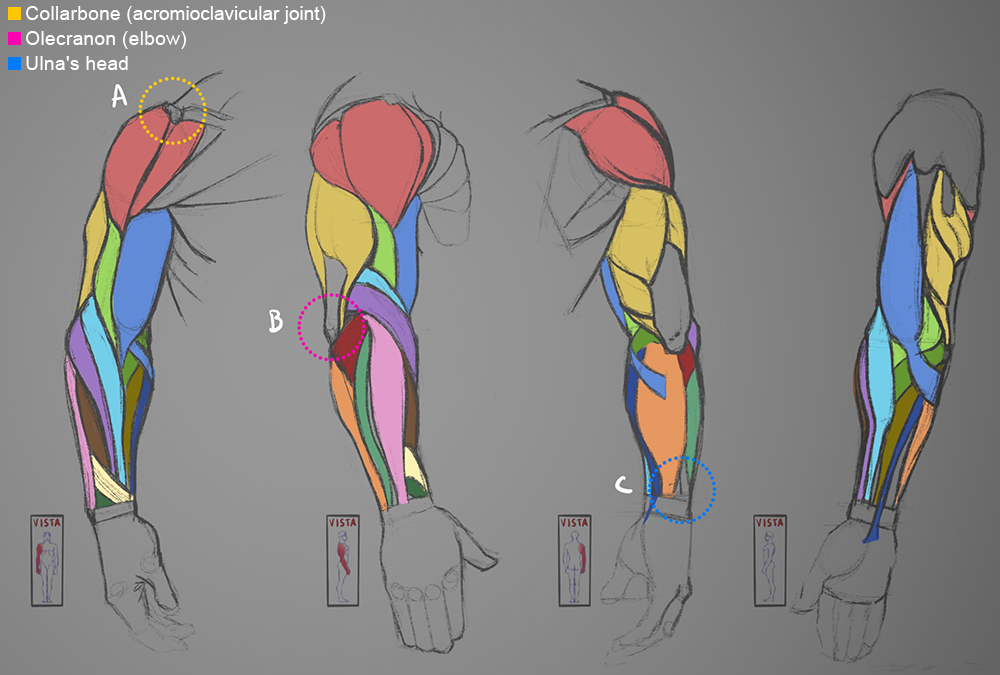
![]() Deltoid
Deltoid
![]() Triceps
Triceps
![]() Biceps
Biceps
![]() Brachialis
Brachialis
![]() Brachioradialis
Brachioradialis
![]() Carpi radialis longus muscle
Carpi radialis longus muscle
![]() Extensor digitorum muscle
Extensor digitorum muscle
![]() Extensor carpi ulnaris
Extensor carpi ulnaris
![]() Flexor carpi ulnaris
Flexor carpi ulnaris
![]() Anconeus
Anconeus
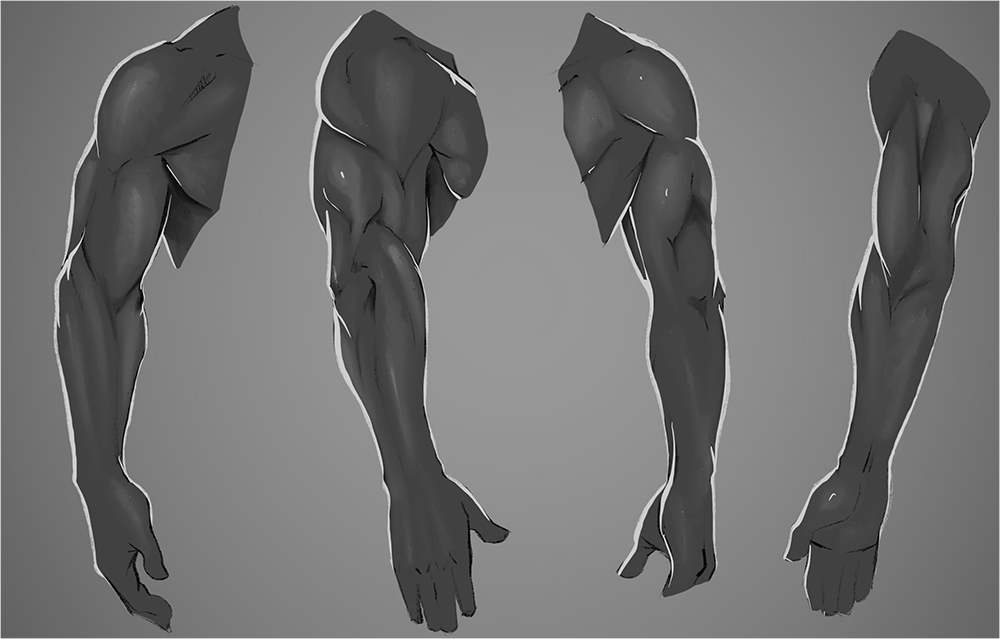
Movement and Rotations
On many occasions, the arm can be difficult to draw due to all its movement options: vertical, horizontal, diagonal turns, rotations, etc. This is because the head of the humerus is rounded and allows almost 360º mobility. Therefore, it is one of the greatest difficulties when drawing arms. Let me show you some rotation movements to help you solve these problems in your illustrations. Look closely at how the radius bone spins on the ulna during the rotation movement.

Note: Use the head of the ulna (red) as a reference. It must always be on the side of the little finger.
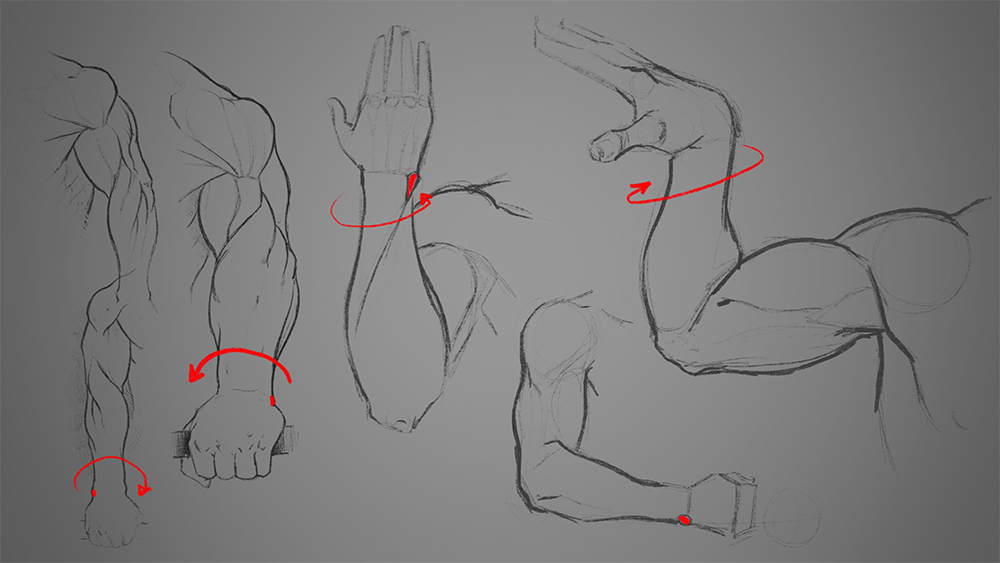
If you want to add realism to your illustrations, the arms' movement is aligned with a whole set of muscles and bones. For example, when drawing a pose in which the arms are raised, do not forget that, in the frontal plane, the pectoral (red), the latissimus dorsi (pink), and the collarbones (yellow) are raised; and the serratus (blue) is visible in the rib cage. In the posterior plane (back), remember to include the movement of the scapula (green), as it also contributes to the movements of the arm. You can see it in the following images:
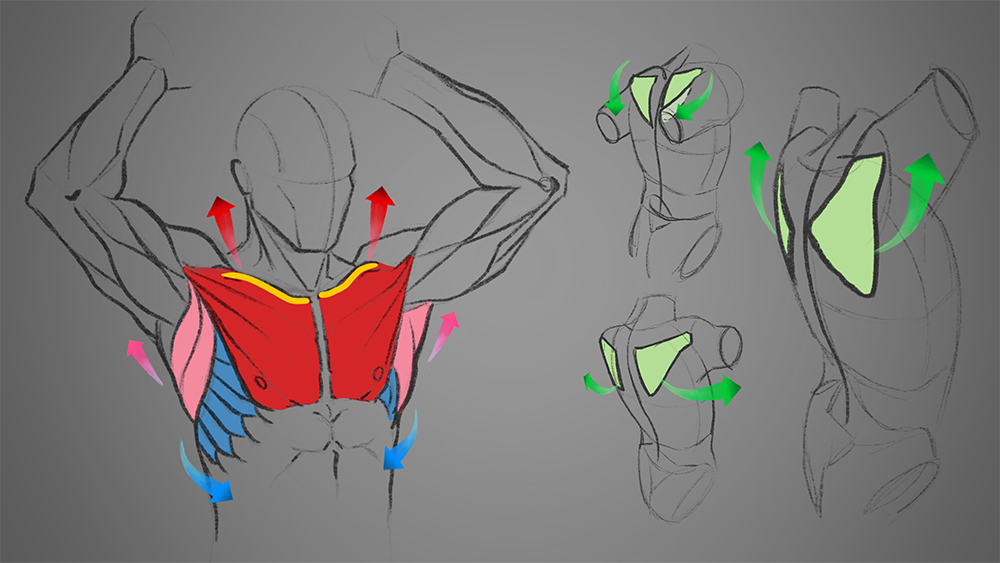
In short, to simplify the process of drawing an arm, we only must follow three clear guidelines: the proportions, the main muscles, and the reference points.
I hope that my advice, along with my video, will help you, and soon you can easily solve arms in your illustrations.
Thank you for reading this tutorial. I encourage you to share on Instagram (@Danipuente_conceptart) the notes and illustrations you have made following this tutorial. Maybe a creature with 4 or 6 arms? Go for it! I would love to see it!

If you have any questions, I am at your disposal: danielpuentemorales@gmail.com.
It has been a pleasure to draw for all of you!
– Daniel Puente
www.Danipuente.com
Instagram.com/danipuente_conceptart/
Artstation.com/danipuente
How To Draw Arms Step By Step
Source: https://www.clipstudio.net/how-to-draw/archives/164594
Posted by: nelsonbluddre.blogspot.com

0 Response to "How To Draw Arms Step By Step"
Post a Comment